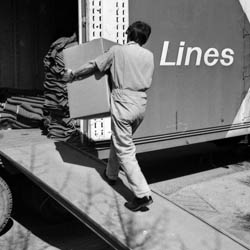The images found on this page suggest the importance of the transportation industries to Saskatchewan and of the wide range of jobs they provide. In June 2009 the Saskatchewan Ministry of Advanced Education, Employment and Labour reported that 25,400 residents worked in the transportation and warehousing industries. Many others are employed in businesses related to transportation such as the construction and maintenance of roads, railroads and facilities, and with the local delivery of goods.
Good transportation services are vital to every modern economy. Saskatchewan's longstanding dependence on the export to distant markets of grains, and minerals has made the smooth operation of rail transportation a vital concern. A wide dispersion of population over a vast area has led to Saskatchewan having the highest amount of road surface (250,000 km) of any Canadian province. Saskatchewan also faces the challenge of developing transportation systems that will work as well in frigid cold winters as in its hot and dry summers.
The growth of agricultural settlement at the first turn of the 20th century was unthinkable before the construction of national railroad links. The railroads gave settlers access to land available for homesteading, provided links to markets for their agricultural production, and provided access to manufactured products from Central Canada. The construction of railway main and branch lines required thousands of men able and willing to work under challenging and often dangerous conditions. To cut labour costs the builders imported and employed immigrant labour from southern China who were sometimes paid only a third of the amounts provided to whites, blacks, and native Canadians.
Saskatchewan was also transformed by the eager adoption of automobiles in the early 20th century. By 1920 there were over 60,000 registrations of automobile ownership; by the 1990s there were over 800,000 vehicles registered in the province, one of the highest population-to-vehicle ratios in the country.['1'] Personal vehicles and new road construction made the population more mobile, and less dependent on goods and services provided by nearby village and small town businesses. In 1946, Premier T.C. Douglas's first CCF government established the Saskatchewan Transportation Company. The crown corporation was mandated to provide passenger and freight services between major centres and to as much of the rural population as possible.
Regina was one of the original communities to be serviced by Trans-Canada Airlines (TCA), the forerunner of Air Canada, in 1939. Scheduled passenger service to other provincial centres began in Saskatoon in 1947. The establishment of air service required the construction and operation of air terminals and runways and the employment of many as ground crew, including sales agents, baggage handlers, security personnel and mechanics.
Associated with developments in the wider transportation industry were changes to local delivery service. In the past many products were home delivered, including purchases from mail order catalogues, laundry and dry cleaning, coal, oil, wood, milk, butter, eggs, groceries, ice and ice cream. Such service was and is labour intensive and inevitably became a target for businesses seeking reductions in costs. A more widespread ownership of personal vehicles and a decline in the number of women working at home may also have been contributing factors.
Despite the emergence of do-it-yourself businesses that lease trucks and vans, moving companies still transport appliances and furnishings to new homes. Products still home delivered include flowers, hot fast food, and newspapers. Canada Post has been reluctant to extend individual home delivery of mail to new subdivisions and instead now deposits mail in neighborhood boxes.
Footnotes
↑ ['1'] Automobiles. Accessed April 16, 2010.


![Railway Employees Beside a Grand <br />Trunk Pacific Train, ['ca. 1910s']](cropthumbs/R-A1298.jpg)
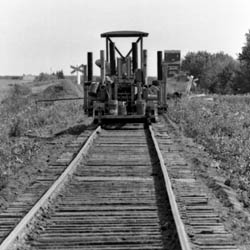
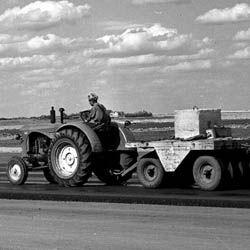


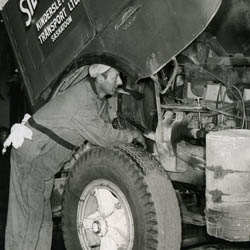
![Saskatoon Cartage and Warehouse Dray, ['ca. 1920']](cropthumbs/LH-3642.jpg)
![Meat Delivery, ['ca. 1905']](cropthumbs/R-A26226.jpg)
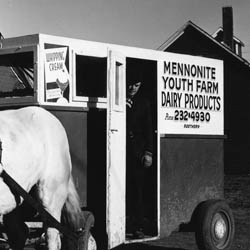
![Sorting Parcels Behind Counter, ['ca. 1965']](cropthumbs/LH-6402.jpg)
![Letter Carriers, ['ca. 1940s']](cropthumbs/R-A24370-1.jpg)
